EL VESUBIO
LOCATION AND HISTORY
The site is located within Buenos Aires province, next to the motorway heading to Ezeiza International Airport. The camp consisted of three colonial style buildings. It had already been used as a torture camp since 1975 by the paramilitary Alianza Anticomunista Argentina. Following the military coup in 1976, it served the same purpose under the First Army Corps commanded by General Guillermo Suárez Mason. Up until it was closed down and demolished in 1978 to mark the visit of the Inter-American Commission on Human Rights (Comisión Interamericana de Derechos Humanos), 1500 people had been held captive in El Vesubio, of which only few have survived.
Among the victims of El Vesubio were Elisabeth Käsemann, German, Héctor German Oesterheld, Rolf Nasin Stawowiok, Juan Thanhauser and Federico Jorge Tatter Morínigo, four victims of German descent, Wolfgang Achtig, Austrian, Luis Alberto Fabbri and Daniel Jésus Ciuffo, two Italians, and Françoise Marie Dauthier and Juan Marcelo (Jean Marcel) Soler Guinard, two French victims.
LIFE IN THE CAMP
Physical torture of a detainee could last for days or even weeks at a time and consisted of beatings, of electric shocks applied to sensitive parts of the body, or of “submarino”, a form of waterboarding. Detainees were forced to watch their family members being tortured. In one particular instance, a mother had to witness the torture of her 14-year old son.
Virtual reconstruction of the detention and torture rooms, Memoria Abierta
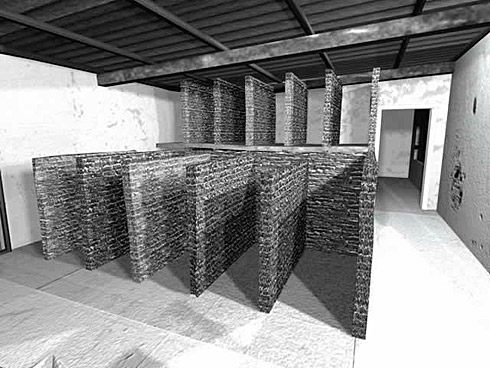
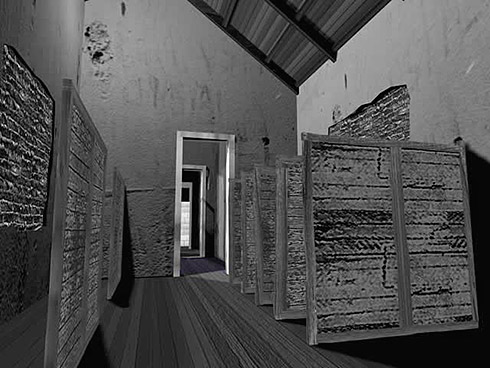

House 1

House 2

House 3

EL VESUBIO MEMORIAL PROJECT
Although the buildings of El Vesubio were demolished in 1979 to deny the existence of detention and torture camps in Argentina, the foundations and traces that remain bear witness to its existence. The structure of the camp, which is still recognisable today, corresponds to the accounts given by survivors.
Significance and state of the site
As part of the ongoing legal proceedings in Argentina, the existence of the camp has been proven through the examination of the site. The remains of the camp had the same legal significance as the testimony of contemporary witnesses.
The site is important not only for its legal significance, but also as a place of remembrance. It is essential that the former secret detention camp be preserved so that its traces as part of the memory of the dictatorship cannot be erased and what happened there cannot be trivialised. It should remain visible and significant as a place of remembrance for future generations.
Wind, weather and environmental influences have increasingly deteriorated the condition of the remains. There is an obvious need to protect the remains that are still visible today in order to preserve them and to recover more remains with the help of professional specialists. It is necessary to stop the progressive destruction of the site.
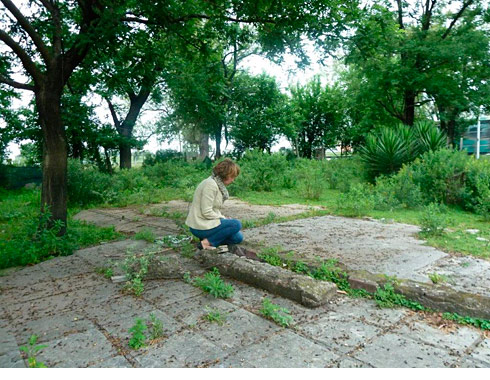
Project and constrcution planning
The Project for the conservation of the remains of El Vesubio was developed by the organisations of the survivors of El Vesubio and the Puente 12 detention centre, together with Memoria Abierta, and presented to the Argentine National Human Rights Office.
The plan provides for the conservation and protection of the remains of the four buildings, which are exposed to the elements. In addition, the entire site will be protected and demarcated. A small new building will be constructed on the site to house an office that will oversee the construction work and the memorial.
The office will be responsible for activities such as:
– developing a new access to the site,
– covering the four areas with visible foundation walls with galvanised sheet metal,
– constructing a perimeter wall around each of the four areas to prevent water ingress,
– creating a protective area around the four areas consisting of a five metre wide grass embankment,
– the construction of walkways connecting the different areas and forming a circuit. This will protect the excavation area and allow archaeological work to be carried out. At the same time, they will allow visitors to walk around the site.
– the construction of protective structures and stairways.
The various works will support the development of the archaeological excavation, which will reveal the foundations of all the buildings and remains on the site.
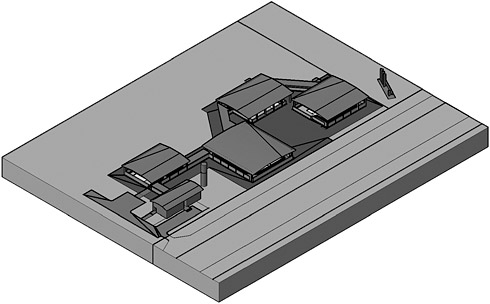
Axonometric representation of the architectural/archaeological project for the preservation of the secret detention centre El Vesubio, Memoria Abierta
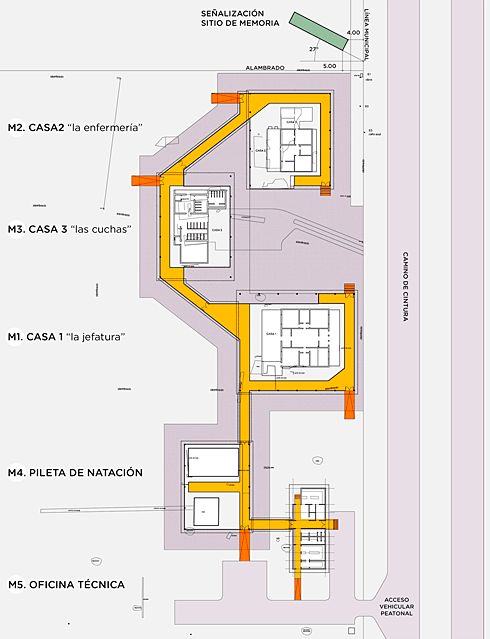
Overall floor plan of the architectural/archaeological project for the preservation of the secret detention centre El Vesubio, Memoria Abierta
